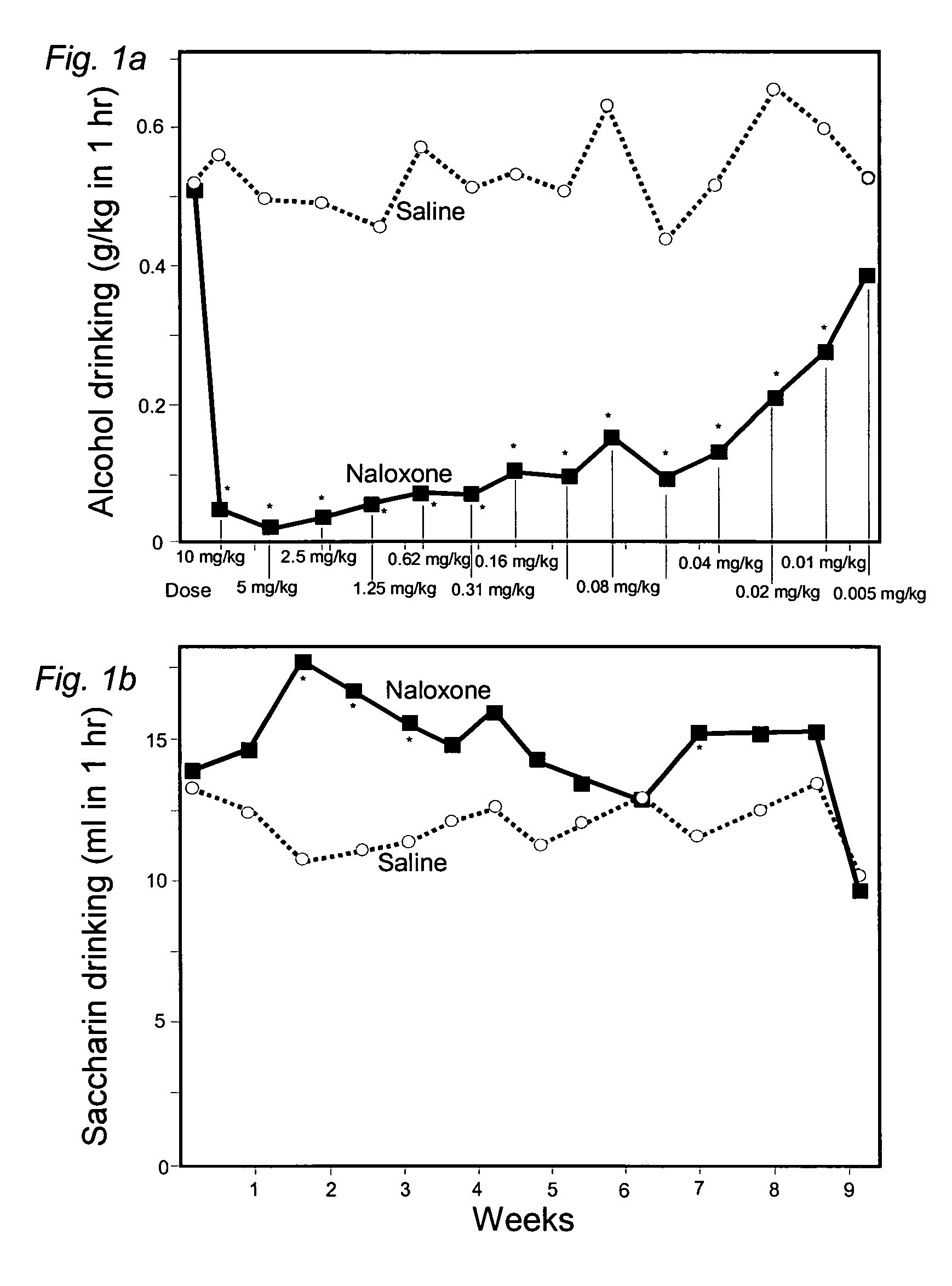Method for treating eating disorders by selective extinction with transdermal naloxone
a technology of naloxone and selective extinction, which is applied in the field of treating eating disorders by selective extinction with transdermal naloxone, can solve the problem that the subject cannot make the response, and achieve the effect of increasing the effectiveness of extinction
- Summary
- Abstract
- Description
- Claims
- Application Information
AI Technical Summary
Benefits of technology
Problems solved by technology
Method used
Image
Examples
example
[0066]Male Wistar rats (n=26) were individually housed with daily access to 10% ethanol, with food and water always present. After 2 months prior experience, the rats were switched to having 2-4 alcohol-access days interspersed with 1 or 2 days when saccharin solution (1 g / l) was available for 1 hr. The rats were then divided into 2 matched groups, one always receiving a subcutaneous dose of naloxone prior to alcohol access and a control group receiving a similar injection of saline prior to alcohol access. No injections were made prior to saccharin access. In addition, the naloxone dose was progressively reduced from 10.000 to 0.005 mg / kg.
[0067]The naloxone injections significantly reduced alcohol drinking in comparison with both the alcohol intake by the controls and in comparison with their own prior levels (see FIG. 1a). The alcohol drinking continued to be significantly reduced for 8 weeks; many of these weeks involved doses far lower than previously found to be effective. Alco...
PUM
| Property | Measurement | Unit |
|---|---|---|
| body weight | aaaaa | aaaaa |
| strength | aaaaa | aaaaa |
| time | aaaaa | aaaaa |
Abstract
Description
Claims
Application Information
 Login to View More
Login to View More - R&D
- Intellectual Property
- Life Sciences
- Materials
- Tech Scout
- Unparalleled Data Quality
- Higher Quality Content
- 60% Fewer Hallucinations
Browse by: Latest US Patents, China's latest patents, Technical Efficacy Thesaurus, Application Domain, Technology Topic, Popular Technical Reports.
© 2025 PatSnap. All rights reserved.Legal|Privacy policy|Modern Slavery Act Transparency Statement|Sitemap|About US| Contact US: help@patsnap.com

